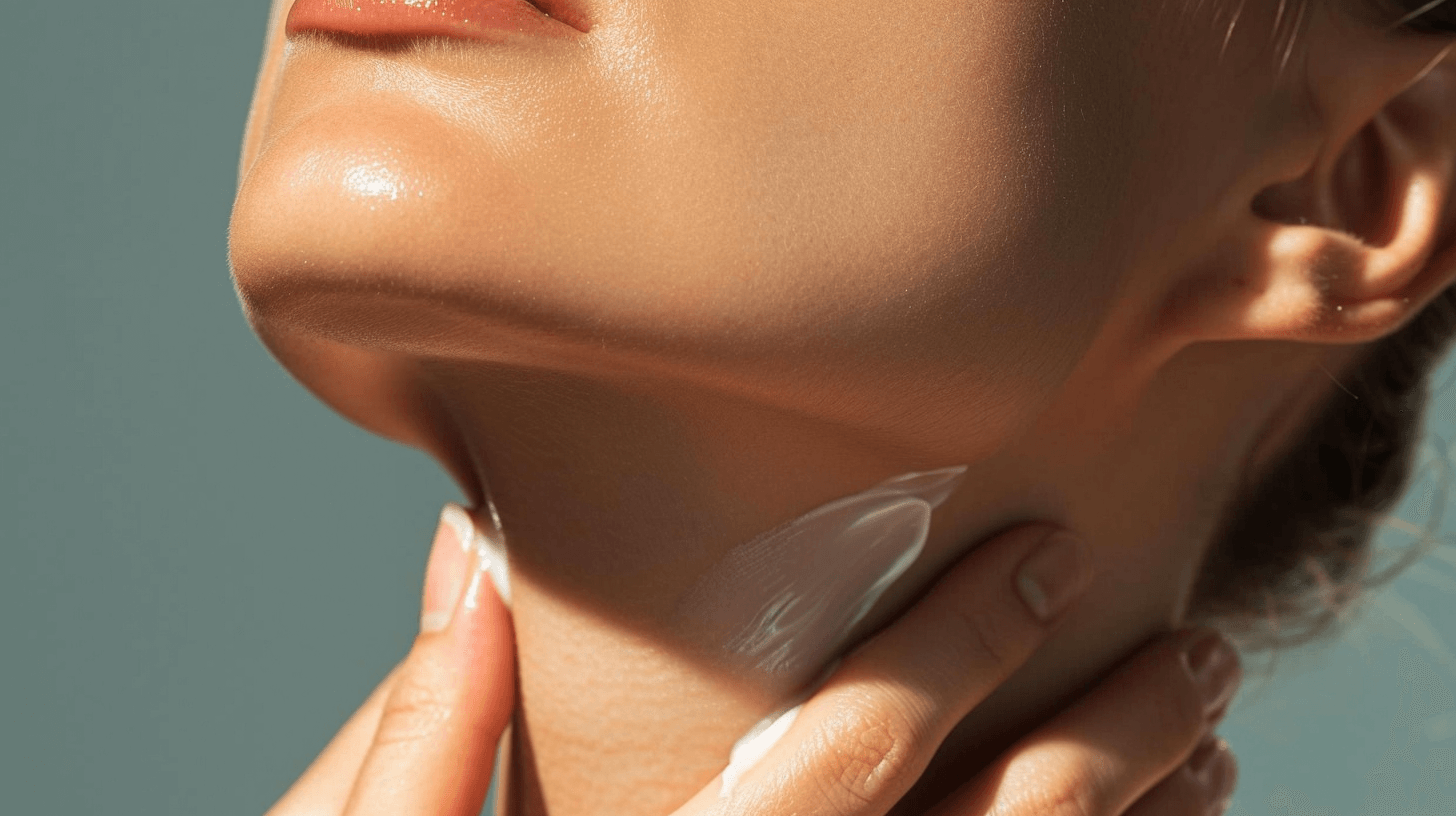Minimizing Your Thyroid Removal Scar: Expert Care Techniques and Healing Strategies


Facing thyroid scar removal can be daunting, but you’re not navigating this path alone. This guide dives straight into practical steps to minimize your scar’s appearance and ensure your skin heals with care. Discover how to tackle a thyroidectomy scar with confidence and learn what to expect along the way.
Key Takeaways
The appearance and patient satisfaction with thyroidectomy scars improve over time, with notable patient satisfaction at six months post-surgery, and factors like surgical technique, scar placement, and personal skin characteristics affecting scar visibility.
Several thyroid surgery techniques are used, including traditional thyroidectomy and minimally invasive methods like transoral thyroidectomy, which aims to reduce visible scarring, particularly in patients prone to keloid or hypertrophic scars.
Effective long-term scar management involves sun protection, regular moisturizing and massages, professional treatments like steroid injections and laser therapy, and consistent care, with support and resources available for patient guidance and recovery.
Understanding Thyroid Surgery Scars

A thyroid removal scar usually appears as a thin, horizontal line at the lower front of the neck, about 3 to 4 inches long. But its final look isn’t just about the surgery—it also depends on closure techniques, skin type, and personal factors like a history of keloids or darker skin tones. Whether it’s a thyroid surgery scar from a traditional or minimally invasive procedure, knowing what affects healing can help you manage and fade it effectively.
Interestingly, patients’ perceptions of their thyroid surgery scars evolve throughout the healing process. Initial anxiety before surgery and during the early recovery phase often gives way to increased satisfaction over time. Most patients report satisfaction with the appearance of their scars by six months after surgery, with continuous improvement observed up to one year post-thyroidectomy.
However, concerns about the cosmetic appearance and worries about how others will perceive their scars often outweigh concerns about the surgery itself.
Types of Thyroid Surgery and Scar Placement

Thyroid and parathyroid surgeries, including partial thyroidectomy, total thyroidectomy, and parathyroid surgery, each leaves a similar scar across the lower front of the neck. The type of surgery can affect the placement and size of the scar post-procedure.
In this article, we will discuss the two main types of endocrine surgery for the thyroid: Traditional thyroidectomy and minimally invasive techniques.
Traditional Thyroidectomy
Traditional thyroidectomy, typically performed at leading institutions, usually leaves a scar that’s 1 to 2 inches long and located on the anterior neck. This scar is carefully positioned in a skin crease to promote healing and minimize visibility. The procedure involves a standard incision known as the Kocher collar incision, which is performed by a skilled surgeon. Depending on the size of the thyroid or the need for concurrent lateral neck surgery, the incision can be longer than usual. It’s typically 4-6 centimeters (2-3 inches) long.
Minimally Invasive Techniques
Minimally invasive techniques such as transoral thyroidectomy or scarless thyroidectomy is an alternative surgical approach that aims to reduce any visible scarring. It is particularly suitable for individuals prone to developing keloid or hypertrophic scars, and those who have apprehensions about visible scars. However, this technique is not appropriate for patients with large tumors or goiters.
The transoral thyroidectomy, for instance, is performed through the mouth to avoid leaving a visible neck scar. Patients who've had their thyroid removed through a transoral thyroidectomy often experience minimal pain and discomfort, leading to a quick discharge the following day.
Post-Surgery Wound Care
Every surgeon agrees that post-operative wound care significantly influences the healing process. After thyroid surgery, the initial steps include removing the dressing and taking a shower. However, it’s important to avoid excessive activity immediately after the operation. If the wound was closed with clips, they’ll be removed 1-2 weeks after the surgery.
It’s normal to feel some pain and stiffness after thyroid surgery. If you do, don’t hesitate to inform your doctor or nurse. Continue your neck exercises until you regain the ability to move your neck and shoulder as freely as before surgery, which typically occurs within a few weeks.
Reducing Scar Visibility
Reducing the visibility of your thyroid surgery scar involves a combination of sun protection, moisturizing the skin, and performing scar massages. These simple strategies can significantly improve the appearance of your scar over time.
We will examine each strategy in detail.
Sun Protection

Protecting your scar from the sun is not just about maintaining its appearance. It’s also about preventing it from darkening and thickening. And how can you do this? Here are some tips:
Wear breathable tops with higher necklines
Use a high SPF sunscreen on the scar
Wear a wide-brimmed hat for additional shade
Choose clothing that covers the scar yet allows the skin to breathe
Though it might require some effort, sun protection remains a key factor in preserving your scar’s appearance. After all, your skin is extra sensitive after surgery, and the last thing you want is to trigger any complications due to sun exposure.
Moisturizing and Massaging

Moisturizing and massaging your scar can enhance both its appearance and texture. You can use vitamin E cream, cocoa butter, lanolin or a scar cream for moisturizing. Apply a small amount on the scar and use your fingers to massage the skin and tissue under it downward towards the scar, avoiding direct contact with the scar itself.
It’s recommended to moisturize your scar twice daily for a duration of 3–4 months. If the scar remains red and elevated, it may be necessary to continue moisturizing for a longer period. So, don’t rush the process. Healing takes time, and patience is key.
Dealing with Sensitive Skin and Keloids
For those with sensitive skin or a history of keloids, managing and minimizing scarring after thyroid surgery takes a bit more care. Yes, keloids can develop after thyroid surgery. These are raised, thickened areas of scar tissue that develop at the location of an injury or incision.
Fortunately, keloids can be treated with non-invasive, minimally invasive, or surgical options, depending on the individual case. If you need more information about these treatments, don’t hesitate to consult with your healthcare provider.
Long-Term Scar Management
Long-term scar management consists of simple yet effective steps. As discussed, sun protection is pivotal. Apply sunscreen of at least SPF 30 on the scar every day for at least a year after surgery. Keeping the scar moisturized is also important. Apply a light layer of moisturizing ointment multiple times a day. Ensure the incision is kept clean.
Regular scar massages can enhance its look and condition as time passes. Silicone gel sheets can be used to flatten and reduce the redness of raised scars. Remember, managing a scar is a marathon, not a sprint. Consistent care is key to achieving the best results.
Emotional Impact of Thyroid Surgery Scars

The physical aspect of a thyroidectomy scar is just one part of the equation. The emotional impact is often just as significant, if not more. Patients who undergo thyroid surgery often experience preoperative anxiety related to the surgery and the potential appearance of post-surgical scars. Following the surgery, their feelings about the scars can vary from:
embarrassment
self-consciousness
insecurity
sadness
acceptance
pride
For some individuals, a thyroidectomy scar represents their triumph over thyroid disease, instilling a sense of pride. It can also present an opportunity to:
Connect with and build relationships with others who have experienced thyroid disease
Share your story and inspire others
Raise awareness about thyroid disease and the importance of early detection and treatment
Remember, your scar appearance is a part of your story, and every story is unique.
Professional Scar Treatments and Alternatives

Although at-home care can help manage your scar, professional treatments can further improve the look of thyroid surgery scars. These treatments usually involve:
Scar revision
Steroid injections such as Kenalog or Triamcinolone for hypertrophic and keloid scars
The application of silicone products specifically designed to flatten and diminish the redness of raised scars.
There are also alternative treatments for scars, such as:
Laser therapy, which can effectively reduce the size and soften the texture of thick scars
The use of botulinum toxin A (Botox)
Protecting the scar from sun exposure
Moisturizing the scar
Cryotherapy
Light-emitting diode low-level light therapy
Applying scar treatment sheets
Applying Aspirin or Honey to the scar
Support and Resources for Thyroid Surgery Patients
No one should have to navigate the journey of thyroid surgery recovery alone. Support and resources are available to guide you every step of the way. Platforms like Ready Set Recover provide a framework of education, inspiration and actions to help prepare for and recover from surgery focusing on the mind/body connection and improving emotional wellbeing during a difficult time.
Other options for support include support groups available through your hospital or online as well as discussing concerns with a licensed therapist. Remember, reaching out for help is a sign of strength, not weakness. You’re not alone in this journey.
What You Should Know About Thyroid Removal Scars
Understanding and managing your thyroid surgery scar is an essential part of your healing journey, both physically and emotionally. From understanding the nature of thyroidectomy scars, through the types of surgeries and their impact on scar placement, to post-surgery care, reducing scar visibility, dealing with sensitive skin and keloids, long-term scar management, and the emotional impact of scars - it’s a journey that requires patience, consistent care, and a lot of self-love. Remember, your scar is a testament to your resilience and strength. Wear it with pride.
Frequently Asked Questions
Does thyroid removal leave a scar?
Yes, traditional thyroidectomies and parathyroidectomies typically leave a visible scar in the lower front of the neck, but there are scarless alternatives available through advancements in endocrine surgery at certain medical centers.
Is getting your thyroid removed a big operation?
Yes, getting your thyroid removed is a significant operation that requires careful consideration of your overall health and recovery. It involves a pre-assessment appointment and meeting your healthcare team.
How big is the incision for thyroid removal?
The incision for thyroid removal is typically 2-3 inches in length, and it is usually hidden in a natural skin crease for cosmetic purposes. This helps to minimize the visible impact of the surgery on the patient's appearance.
How can I care for my wound after thyroid surgery?
To care for your wound after thyroid surgery, remove the dressing and take a gentle shower. Avoid excessive activity, and expect the clips to be removed 7-10 days after the surgery.
What professional treatments are available for thyroid surgery scars?
Professional treatments for thyroid surgery scars include scar revision, steroid injections, silicone products, and laser therapy to flatten and diminish the appearance of the scars. It's essential to consult a healthcare professional to determine the most suitable treatment for individual cases.







